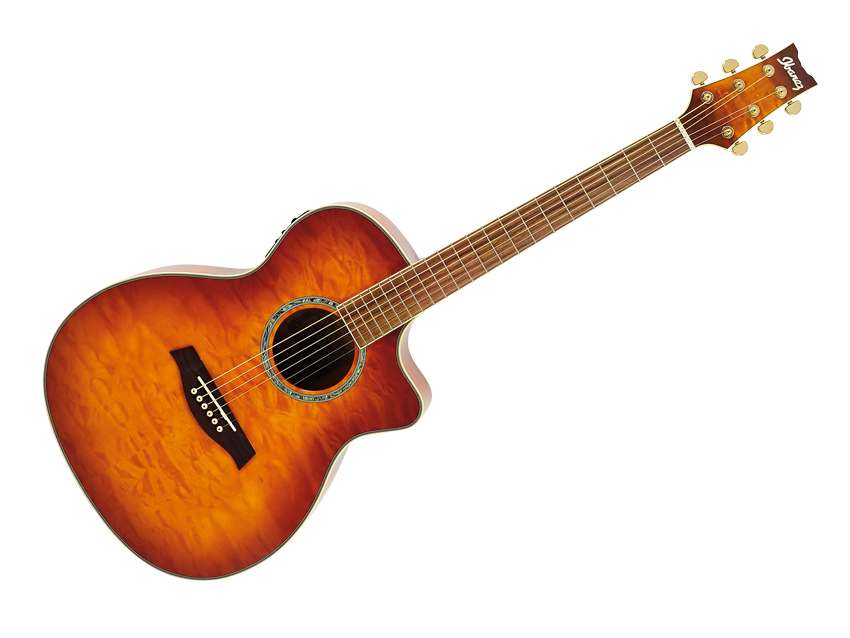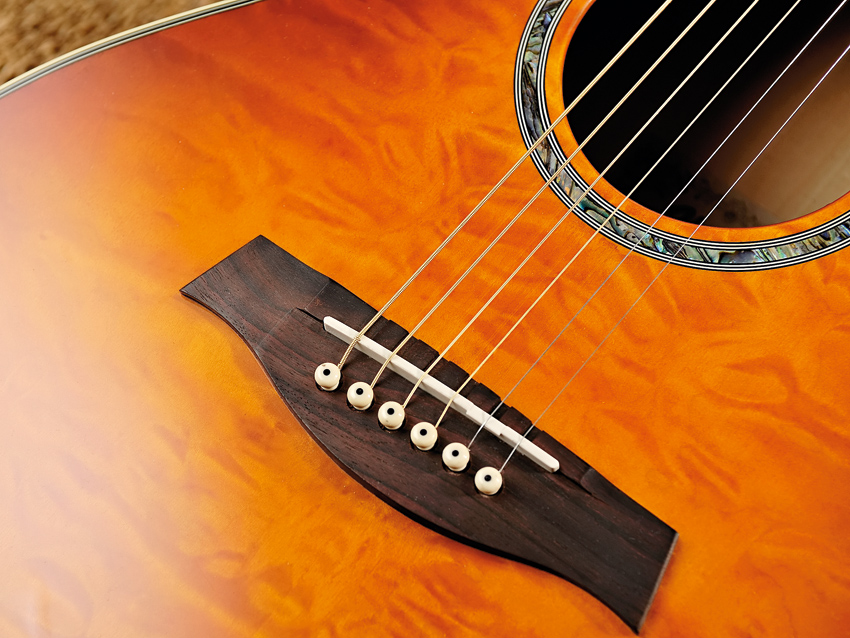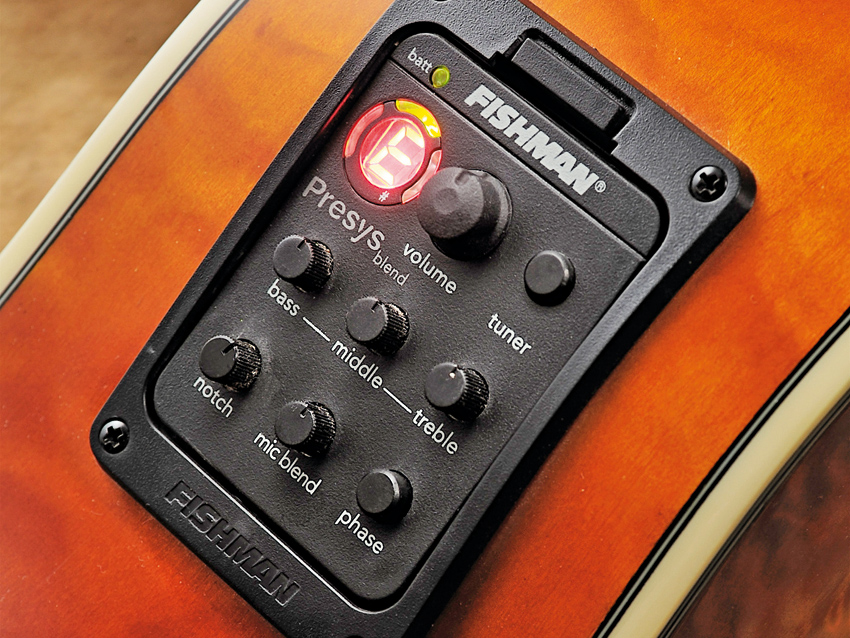MusicRadar Verdict
A good-looking electro that's most at home plugged in.
Pros
- +
Looks; electronics; good set-up.
Cons
- -
Unplugged performance; price.
MusicRadar's got your back

Ibanez A300E-VV

Ibanez A300E-VV

Ibanez A300E-VV
Known primarily for its electric models, Ibanez's current acoustic and electro-acoustic offerings are far more than simply page fillers for the rear-end of the catalogue.
The A300E hails from the Ambiance series of Ibanez's electro range. It's an instantly arresting guitar, employing a quilted laminate top, and is clearly targeted at gigging musicians on a budget… so most of us, then!
"The A300E sings loud with a bright, woody tone full of mid-range and 'zing', with a timbre well suited to choppy chord work and solos."
The Ambiance series features an arched back. The concept is twofold: to resist feedback and make the guitar more comfortable to play, particularly when seated.
Ibanez describes the A300E's body as being 'Original Ambiance'. We're not too sure what that means, but in terms of its dimensions, the A300E is slightly narrower and shorter than a standard OM shape, though the cutaway on our review model is deeper than you'd find on a typical OM cutaway.
This facilitates very easy access to the dusty end of the fretboard - a top G on the B string requires very little stretch, for example.
With the quilted maple and vintage violin finish providing such a distinct visual vibe, Ibanez has wisely refrained from over decoration. Apart from an understated abalone soundhole rosette, there's really little else to comment on.
Instead, Ibanez has included some excellent tone-enhancing features. These include the use of bone-substitute Ivorex II for both the nut and compensated saddle.
Ibanez claims it's more durable than bone and harder than the original Ivorex; we're told Ivorex II offers brilliant highs and more pronounced lows with less mid-range - characteristics particularly suited to an amplified acoustic.
Ibanez has also used its own Advantage bridge pins, which aim to provide greater stability and smoother transfer of string vibration to the soundboard.
In terms of presentation, the A300E scores well, sporting nice, clean joints and tidy fretwork. On the downside, some players may feel the gloss finish is a little too thick, and we couldn't shift the feeling that the headstock looks as if something had taken a bite out of the top of it!
The A300E is fitted with the Fishman Presys Blend Preamp, which uses an internal mic and piezo pickup. A three-band EQ, mic blend, notch filter, phase switch and tuner complete the line-up of features.
But we also get a balanced XLR output as well as the standard jack - in short, PA-ready. We also like that we don't have to plug the guitar in to engage the tuner.
Sounds
Straight off the bat, the A300E sings loud with a bright, woody tone full of mid-range and 'zing', with an overall timbre well suited to choppy chord work and solos. There's plenty of sustain and volume, but when compared with a similar-priced small-bodied electro, the A300E does sound somewhat boxy, brittle and lacking in bass - no doubt due to the guitar's shallower body.
So, although not the richest sounding acoustic we've encountered at this price point, staccato jazzy chords and even a splash of Gypsy jazz work very well.
Plugged in, there's a big improvement. With more tonal shades available via the blend control, we find likeable tones for a range of disciplines, be it chord or single-note work.
The three-band EQ performs its duties well and helps offer an increased palette of timbres and the powerful output packs a lot of punch, so watch your amp or PA's input level to avoid distortion or too-quick entry into feedback.
The A300E will appeal to many electric players crossing over into the acoustic realm. While lacking in purely acoustic tonal capabilities, it's clearly designed to be played amplified - and good it is too, proving there's a lot more to Ibanez than electric signature models and Tube Screamers!
Steve Harvey is senior content producer for Pro Sound News and also contributes to other Future brands. He has worked in the pro audio industry — as a touring musician as well as in live production, installed sound, and equipment sales and marketing — since November 1980.
“Every post feels like a test. If it flops I feel like a failure”: 61% of DJs feel that their social media presence is more important than their skill
“This update reflects everything we believe modern gear should be”: Neural DSP gives the Nano Cortex an almighty power-up with free NanOS 2.0.0 system update
“It’s honestly got me thinking hard about adding one to my own studio set up”: Two Notes Reload II review









